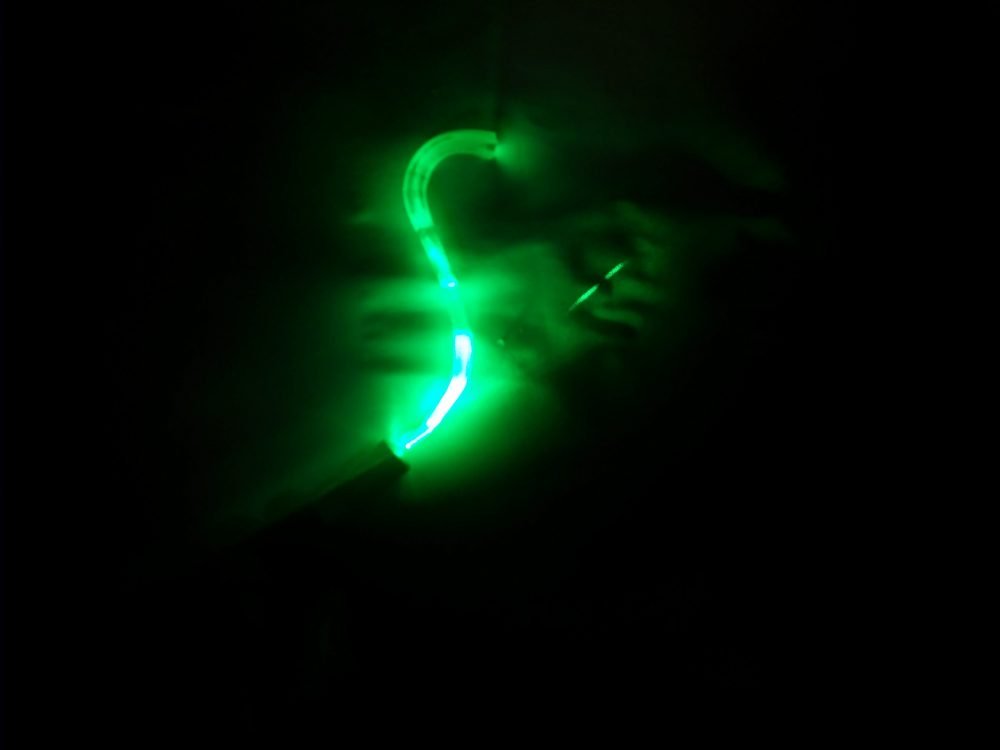

Light experiments for kids just got another great activity – edible optics.
There are not many resources for teachers and parents when it comes to optics for kids, but this new edible optics STEM activity does a great job blending fun with college-level science.
Our Jello optics lab has all of these things, and to make it an extremely cool science project we add in lasers. I mean, what can be better than playing with Jello and lasers? And, it is one of my favorite edible science projects
When we cut Jello into lens shapes or even a long thin rectangle we can see first hand how light interacts with matter.
How does this laser Jello experiment work?
If you think of light as an incredibly fast runner, when it hits the gelatin is starts to run a bit slower. If we have our light runner hit the gelatin at a weird angle, it will get in a few more quick steps with one foot then it will with the other, which will cause our runner to turn.
Light experiments for kids that show refraction.
This is what you see with the laser light in the gelatin if you shine it at an angle. The laser beam bends! It bends more for a larger angle, and less for a smaller angle. Thus if you hit it head-on, the light just goes straight through.
This is how convex lenses can focus an image. It bends all the light from every angle of the lens into a single point! Check out the video below to see it in action. Notice how the laser is always bending towards the center line?
Fiber optics for kids using Jello
If you make a long thing rectangle you will notice something else. You will notice the laser beam bounces off the walls as it travels through the jello!
Imagine our fast runner running through a long hallway, as it travels and hits a wall it will bounce off and continue running. If the hallway turns this way and that the runner will just bounce off a few extra walls, but will stay inside the hall!
In real life, some of the laser light makes it out of the jello with each bounce, which is why a longer rectangle will have a less light at the other end. This is because the angle the light bends and how much of the light bends back into the jello depends on something called the index of refraction.
A higher index of refraction means it will bend light even more (and slow it down more as well) when it enters or bounces off walls.

Let’s make edible optics so you can do this fun kids science experiment at home!
For this edible science project, you will need a package of Jello, a package of Knox Gelatine
and parchment paper
. To run the experiment you will also need a laser pointer
– we like the ones with a variety of colors so you can see how the color of the jello and the color of the laser affect how far the laser will travel.
You can make smaller batches if you don’t want a lot of extra Jello on your hands at the end of the experiment. We found that using 1 ounce of the jello and 1/4 ounce of the gelatin was enough to make a convex lens, concave lens, prism, and fiber.
First, measure out your Jello and Knox gelatin. Use the ratio 1:1/4, so for every ounce of Jello use 1/4 of an ounce of gelatin. This makes stiffer edible optics that are easier for little hands to handle!
Boil 1/3 cup of water for each ounce of Jello you use. This is much less water than used in regular Jello. The reduction of water paired with the addition of extra gelatin helps to make very firm Jello. This is helpful because it cuts nicer (meaningless laser scattering) and holds up to experimentation better.
Add in Jello and Knox mix while the water is boiling and stir until it is dissolved. This might take a little bit because you are saturating the gelatin mix to get it as firm as possible.
Pour the mix into a small parchment-lined Tupperware and set it in the fridge for a few hours. You want the container to be small enough for the mix to be at least 1/4 inch thick, although a half in thickness is ideal.
Once the mix has set cut out a convex lens (you can use a football cookie cutter for this if you like), a concave lens, a triangle prism and a long thin rectangle. Voila! You now have edible optics!
We suggest using a long sharp knife for cutting the optics, much like a chef’s knife. This allows you to slice through the Jello optics with a smooth edge. If you have a jagged edge on your gelatine optics your laser will scatter in many different directions (because of the many different angles it hits). This can look cool, but if you are trying to show how lenses converge or diverge a beam of light it can get in the way.
Lighter colors of Jello work very well for seeing the beam propagate through. If you want to show color absorption, like how red jello will gobble up a green laser beam, then you want to use the darker colors. We found sugar free Jello usually has the lightest colors, but you can also use lightly colored fruit juice with the Knox gelatin (or even sugar water) if you want it almost clear.

3 thoughts on “Edible Optics: Jello Laser Projects for Kids”
Comments are closed.